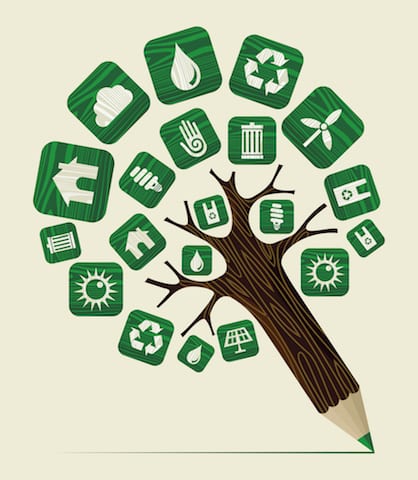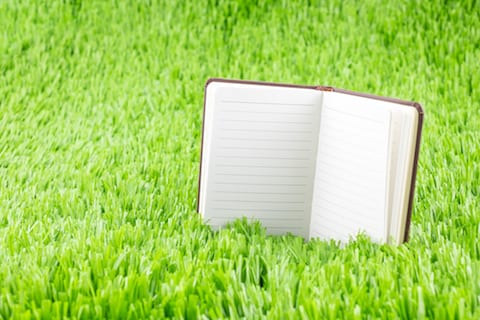https://vimeo.com/213119364
San Francisco Unified School District takes action
By Mind Rocket Media Group
In honor of Earth Month, I’ve started to reach out to people working in school districts who are making an impact on sustainability projects within education. Darya Soofi is the Conservation Manager at San Francisco Unified School District and a lead team member bringing green initiatives to schools. The multi-faceted office concentrates on a number of initiatives including; waste, energy-reduction, water-conservation and zero-carbon goals.
Soofi’s focus is on the behavioral energy side. A program known as Shared Savings has schools volunteering to reduce natural gas and electricity use. If a school reduces energy use by a certain percentage of their baseline, fifty percent of the savings is given back to the school to be spent however they wish. The program saves the district a great deal in utility costs while benefiting individual schools with additional funding.
San Francisco Unified not only assesses school infrastructure needs but supports campaigns that bring learning to students. One example is the “How Low Can you Go?” program that teaches students about natural lighting versus artificial lighting by understanding the use of light meters. Kids get to see the differences in lighting and how unnecessarily bright some classrooms maintain levels.
It’s great to hear first-hand about the success of San Francisco’s district-wide conservation efforts. Other districts throughout the U.S. will undoubtedly look to San Francisco Unified for support as they attempt to launch programs of their own. It’s good to know there are people like Darya Soofi helping to produce the blueprint.
Interview
Dr. Berger: I’m fascinated when we talk about sustainability especially in the context of education. San Francisco Unified is really ahead of the curve. With that as the backdrop, tell me how you approach that in the district. And are you even surprised that this role and this department even exist in public education?
Darya Soofi: Yes. I wouldn’t say I’m super surprised that San Francisco spearheads a lot of these sustainability efforts among school districts.
I just recently got back from a conference in Atlanta. It was a Green Schools conference and it was really cool to see all of these different districts having very similar positions as mine.
We have my director who assembled this team of people and I’m just one of the points in which we strive toward our goals. We’ve got zero-carbon goals, waste initiatives, energy-reduction goals, water-conservation goals. It’s a very multi-faceted office and my position encompasses a lot of that.
I focus mostly on the behavioral energy portion of our office. We have a behavioral program called “Shared Savings” where schools can voluntarily participate. If they reduce their energy usage ─ natural gas and electricity specifically ─ by a certain percentage of their baseline, they get fifty percent of that savings back and the school can spend that money however they like. It saves our utility budget quite a bit of money and it just benefits the school because schools are always looking for forms of funding.

DB: Let’s talk a little bit about the ways in which your department interacts at the school level. I think what’s really interesting is that those districts that may not be as progressive as San Francisco who are watching or reading our interview today are wondering how they can basically what you’ve already built over a number of years as a department within their district.
Tell me a little bit about the connection from the district level down to the school level.
DS: We’re in this pivotal moment of possibly changing the program. It’s been my role as conservation manager to visit these sites that participate. Currently, 44 schools are participating. That’s quite a few. There are around 130 schools that we have so it’s not a sustainable model having one percent work with all these schools who potentially have everyone participating.
I’ve been trying to think about how to change the program to best benefit the schools yet still have this connection to our office and support.
We try to visit the schools twice a year the first year when they sign up for the program and we provide them a walk-through audit. We assess the building to see what sort of level of control they have over their electricity, their natural gas, their heating and lighting.
And then, we set tangible goals for them to achieve that year specific to their behavior. It really depends on the control they have.
They continue to work throughout the year on those goals and we check in mostly through email, and then I’ll try to make site visits if necessary. Most schools that have been part of the program for three or four years understand how this works and they know the tips and tricks to saving energy. It’s mostly supporting new schools to the program in person.
I think what we’re going to try to do more of is assessing site-specific needs in terms of what schools need behaviorally and infrastructurally.
Before, we just have a school sign up regardless of their level of control for their thermostats and radiators; and we’d find ─ as they’re participating throughout the program that year ─ that their level of control is little to none.

It’s really frustrating that we would set these goals like “Turn your lights off” but their lights are all wonky. They’d turn those radiators off by they’re leaking. And so, they don’t see the reductions in their usage.
We’re assessing site needs, hopefully, at the end of this year or early next year before they’re able to participate in the program, and then from there decide how to move forward. I think it’s just mostly accommodating what the schools want.
DB: Do we see a connection to a curriculum in the ways in which students and teachers look at sustainability and model?
If I’m hearing you, there are sort of two different levels. First, let’s see where we are now that creates opportunities in situations to conserve. And second, is there potential to connect it to the ways in which we can help structure and build students that are more sustainable in their nature and their learning, etcetera?
DS: Yes. Students are often involved. It depends on how the school wants to participate in the program. But we’ll have these campaigns where we come in and we teach the students.
An example is a campaign called “How Low Can you Go?” We come in and we teach the students about natural lighting versus artificial lighting, and using the light meter. They get to see natural lighting level versus an artificial lighting level in terms of foot candles and how bright a classroom can really be when all the lights are on and all the shades are up and how that’s an unnecessary level of lighting.
And so, there’s an educational element to it but, again, it’s really dependent on me visiting the site and working with the teachers at one participating school. I’ve only done that campaign at two schools so far this year, to give you an idea. So it gets kind of hard to incorporate curriculum unless the teachers have some initiative.
DB: It’s Earth Month and I would imagine that this is the month to be in your department.
DS: Yes, but we want to be equitable so we didn’t award any school participating in Earth Month any extra points for being a Shared Savings school. But, we have partnered with around 20 different local city organizations that provide really cool resources for schools in terms of waste and energy and water, presentations, assemblies, curriculum.
We’ve partnered with the Green Building Council and they opened up their learning lab curriculum pot. It’s just a slew of awesome sustainability-related lessons. They’re allowing our teachers in the district to free trial it for a whole month. And that’s through the Earth Month competition.
So I think the Earth Month competition is a great time for schools to focus on sustainability. It’s cool because we’re in this moment where climate-change curriculum can come into the district.
We have an eco-literacy teacher on special assignment who is spearheading that. She’s connected us with a lot of the city organizations. She is also connecting with our office to write climate-change curriculum with a bunch of other teachers.
So everything is happening within the end of this year, and it’s so exciting.
DB: Darya, let’s close with this. You could be practicing your work professionally in a number of different sectors when we’re talking about sustainability in the environment.

Yet, you are in the school district in a public school setting. Tell me about the choice that you made to do that. I think it’s really great and I do think that we’re going to be seeing more departments like yours, not just in San Francisco or in California where we might see more progressive and supportive districts in that regard, but throughout the U.S. and abroad.
Tell me about the choice that you’ve made professionally.
DS: I think you kind of get set on a path you end up somewhere. I was on a path toward education. I was an environmental educator for a few years prior to this position and I got placed in a public school in San Francisco and worked there. And then, I was introduced to the sustainability office and department within SFUSD. I thought it was great that our district had something like that. Growing up in my rural community in Montana, we didn’t have anything like that.
It overlapped with what I studied in college. I had leapt on the opportunity because I have a background in education and a previous background in sustainability, and everything tied together.
You could serve in this position – as you’ve said – in multiple industries but it feels like it is the most rewarding to be in a public school district and serving the students because every day is just exciting, fun, and rewarding.
DB: I think it’s great. In education, I think we can continue to do a better job of showing young people all the interesting jobs and roles that you can have. This is an area where we need to shine our light on so that young people can see the possibility because a lot of young people are, obviously, committed, thankfully, to the environment in wanting to do their part. So it’s a great opportunity for all involved.
Continued success and Happy Earth Month!
About Darya Soofi:
Darya Soofi works as a Conservation Manager for the San Francisco Unified School District. Her primary focus is on outreach and implementation of the Shared Savings Energy Reduction Program, which aims to reduce electricity and natural gas use by 20% by 2020. She has worked as a garden science educator with Education Outside and is a graduate of UC Santa Cruz.
Follow Darya Soofi on Twitter
This article was originally published on The Huffington Post
Author
Dr. Berger of MindRocket Media Group is an education correspondent and personality with articles in The Huffington Post, Scholastic, and Forbes
- San Francisco Examiner – ‘Eco-literacy’ woven into SF school curriculum
- San Francisco Examiner – SFUSD teachers help design next-generation science curriculum
- Forbes – Are Education Startups The New Dot Com?


